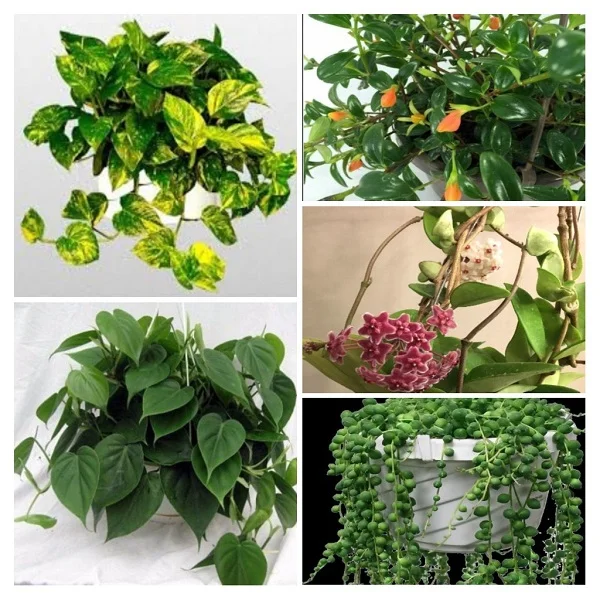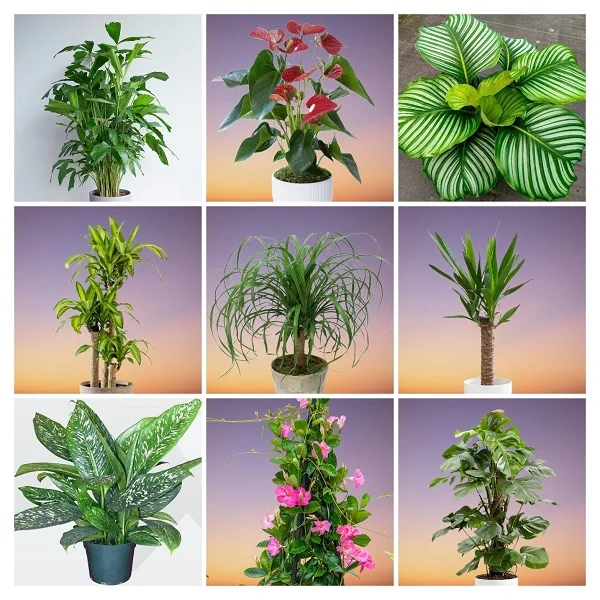Bleeding Glory Vine (Clerodendrum thomsoniae) Care Indoors, Propagation, Problems & Remedies
Some links in this post may be affiliate links
Bleeding Glory Vine (Clerodendrum thomsoniae) thrives in bright indirect light, warm and humid conditions and consistently moist, rich, well-drained soil coupled with monthly feeding in the growing season.
Clerodendrum thomsoniae also called Bleeding Glorybower, Bleeding Heart Vine, Bagflower or Harlequin Glorybower is among the popular, perennial flowering plants and bears two-colored blooms made of red flowers surrounded by white sepals.
The blooms appear bell-shaped and are lightly scented. The flowers are borne in terminal clusters of 8-20 which appear in spring and summer.
The common name, 'Bleeding Heart', is in reference to the red flowers which look like a drop of red blood emerging from the calyx.
Bleeding Heart Vine is a fast-growing plant which climbs by means of tendrils and is among the best flowering plants for hanging baskets, a pedestal or a table-top where the stems can beautifully cascade downwards. It also looks beautiful on a trellis.
Bleeding Glorybower can also be grown as a bushy climber by regularly pinching the growing tips and cutting back the stems when they overgrow.
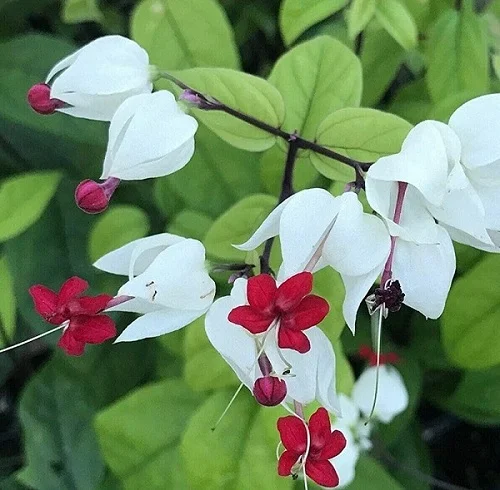
Botanical name: Clerodendrum thomsoniae
Family: Lamiaceae
Common names: Bleeding Glory Vine, Bleeding Glorybower, Bleeding Heart Vine, Bagflower, Harlequin Glorybower
Origin
Bleeding Glory Vine is native to West Africa from Cameroon to Senegal. Clerodendrum thomsoniae was so named at the request of Rev. William Cooper Thomson (1829-1878), a missionary and physcian in Nigeria in honour of his first wife who had passed on.
Size
In its native habitat, Bleeding Heart Vine can grow to a height of up to 18 feet but when grown indoors it grows to about 6 feet high. The leaves are deeply-veined, glossy, dark-green, ovate, about 5-7 inches long, with smooth edges.
Varieties
There are two known varieties of Bleeding Glory Vine;
- Clerodendrum thomsoniae 'Variegatum' with cream-edged leaves.
- Clerodendrum thomsoniae 'Delectum' whose flowers are a lighter shade of red.
Is Bleeding Glory Vine toxic?
No. According to Gardnersworld.com, no toxic effects on Bleeding Glory Vine have been reported. It is considered safe to grow in a home with children, cats, dogs and other pets.
Where to Buy
If you would like to add Bleeding Heart Vine to your collection, you may acquire them online from Etsy (Link to Etsy).
How to Care for Clerodendrum thomsoniae Indoors
To care for Clerodendrum thomsoniae indoors, provide bright indirect light (dappled light), warmth of 16-280C, humidity of 60-70% and consistently moist, fertile, well-drained soil coupled with monthly feeding during the growing season.
Bleeding Glory Vine requires regular pruning to keep it neat, to reduce pest infestations as well as promote flowering. Repotting is only necessary when the plant is extremely pot-bound as it blooms best when root-bound. Keep reading for more on these growing conditions and how to achieve them.
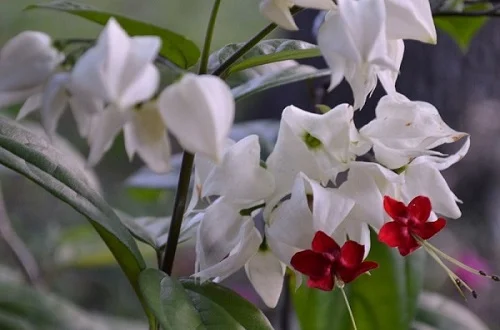
Watering
How often should I water a Clerodendrum thomsoniae?
Water your Clerodendrum thomsoniae thoroughly (until the water comes out through the drainage holes) in spring and summer when the top 1-2 inches of soil feel dry. Keep the soil consistently moist but not soggy to prevent rotting, yellowing and leaf fall.
Reduce watering in fall and winter to maintain the soil slightly moist as growth is minimal at this time. Do not let the soil dry out completely as it can lead to wilting and leaf drop.
Use room temperature water to avoid cold shock which can result in slowed growth and leaf loss. Only use chlorine-free water like rain water or filtered water to prevent browning of leaf edges and tips.
Ascertain that the soil is free-draining and the pot has a drainage hole to prevent waterlogging as it can cause root-rot and death of the plant.
Light Requirements
Does Bleeding Heart Vine need full sun?
No. Bleeding Heart Vine grows best in bright indirect light (filtered light). Place it near a large, brightly-lit window away from direct sunlight to avoid scorching of the leaves.
If the light is not enough, the plant will become leggy with wide spaces between the leaf nodes and will not flower. Where the natural light is not sufficient, you may full spectrum grow lights to supplement it.
Turn the pot regularly to ensure the plant receives light on all sides for even growth and prevent leggy growth.
Temperature & Humidity
Bleeding Glory Vine prefers a warmth of 16-280C. Keep it away from drafty conditions as they can result in stunted growth and leaf drop.
Clerodendrum thomsoniae flourishes in a humidity of 60-70%; a warm and humid environment like in its natural environment. Low humidity will lead to brown leaf tips and edges.
To elevate humidity especially where the room temperatures are very high, like in winter, group the plants together, set the pot on a wet pebble tray or use a cool mist humidifier. Maintain good air flow to reduce fungal diseases.
Fertilizer
How to fertilize a Bleeding Glory Vine?
Feed your Bleeding Glory Vine every 4 weeks in spring and summer with a phosphorous-rich, water-soluble fertilizer to promote flowering. Do not feed in fall and winter as growth is minimal at this time.
Get rid of accumulated salts regularly by running a stream of water through the soil until the water comes out through the drainages holes.
Potting Soil
The best potting mix for Bleeding Heart Vine should be rich in organic matter and free-draining to prevent it from getting soggy while providing the required nutrients. A blend of 2 parts all purpose potting mix and 1 part perlite is ideal for this plant.
Repotting
Repot Bleeding Glory Vine at the beginning of the growing season (spring to early summer), only it becomes extremely pot-bound as it blooms best when root-bound.
Select a pot one size larger than the current one. Ensure the pot has a drainage hole and the soil is free-draining soil to avoid getting soggy soil which can lead to root-rot. Check out these pots with drainage holes on Amazon.
Note: Do not repot a plant that is in flower as the repotting shock can shorten the flowering period. Take care not to expose the roots to dry air while repotting as it can easily get repotting shock. Keep the roots moist by covering them with a wet towel or by ensuring that there is a ball of soil around them.
Pruning
How do you prune Clerodendrum thomsoniae?
Pruning Clerodendrum thomsoniae involves:
- Removal of dead blooms and leaves to maintain the plant neat and tidy as well as reduce pest and disease infestations.
- Cutting back the stems by half at the beginning of the growing season to promote flowering; the flowers grow from a point just below the growing tips.
Clerodendrum thomsoniae Propagation
Can you propagate Bleeding Heart Vines?
Yes. Clerodendrum thomsoniae (Bleeding Heart Vines) are propagated from stem cuttings or by seed germination. The stem cuttings can rooted either in water or in soil. The best time to propagate is at the beginning of the growing season (spring to early summer) while in active growth for faster establishment.
1. Propagating Bleeding Heart Vine from stem cuttings in water
- Take a 4-6 inches stem cuttings from a healthy vine. Strip off the lower leaves of the cuttings to expose the stem.
- Coat the lower part of the stem of the cutting with a rooting hormone to hasten establishment.
- Put 2-3 inches of the lower part of the stem of the cuttings in a jar of plain room temperature water or in a propagation station. Make sure the nodes are submerged, but not the leaves.
- Place the set up in a warm, well-lit spot away from direct sunlight. Change the water every 5-7 days to prevent fungal growth.
- Root should appear in 1-2 weeks. When the roots are about 2-4 inches long, transfer the cuttings into individual pots in moist, well-draining soil.
- Position the set up in a warm, well-lit place away from direct sunlight to prevent scorching.
- Maintain the soil moist until there is substantial growth after which you can begin routine care.
2. Propagating Bleeding Heart Vine from stem cuttings in soil
- Take a 4-6 inches stem cuttings from a healthy vine. Strip off the lower leaves of the cuttings to expose the stem.
- Coat the lower part of the stem of the cutting with a rooting hormone to hasten establishment.
- Fill a rooting container with well-draining soil and moisten it lightly. Confirm that the container has a drainage hole to prevent the soil from getting soggy to avoid rotting.
- Carefully insert 2-3 inches of the coated stem in the moist soil.
- To hasten rooting, create a mini-greenhouse by covering the set up with a clear plastic bag or humidity dome. Ensure the leaves of the cutting do not touch the plastic bag too much by propping it up with sticks.
- Place the set up in a warm, brightly-lit spot away from direct sunlight to prevent scorching.
- Maintain the soil moist through out until the cuttings are rooted. Rooting should occur in about 2-3 weeks.
- Gradually over a period of two weeks, remove the plastic bag cover or humidity dome to acclimate the new plant to ordinary growing conditions.
- Allow the new plants to be well established before transplanting into a pot 1 size larger after which you can begin routine care.
3. How to grow Bleeding Heart Vine from seeds
- Fill a seed tray with well-draining soil and mist it lightly.
- Spread the seeds evenly on the moist soil and cover lightly with some soil.
- Cover the set up with a plastic sheet to create a greenhouse effect to hasten germination.
- Place the set up in a warm, brightly-lit place away from direct sunlight.
- Maintain the soil moist through out by light misting the soil surface until the seedlings are well established.
- When the seedlings have true leaves formed and are a reasonable size, transplant them into individual pots.
- Position the pots in a warm, well-lit spot away from direct sunlight.
- Keep the soil moist until the new plants are well established after which you can begin normal routine care.
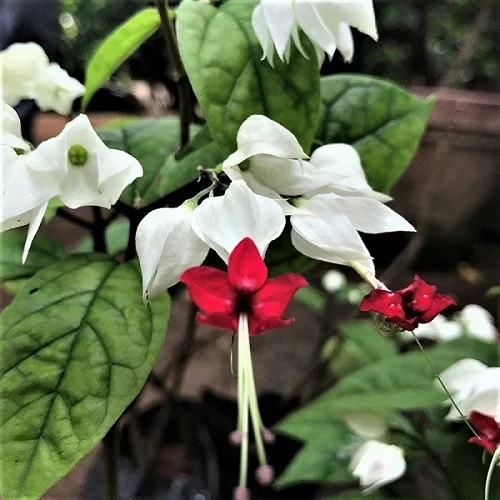
Clerodendrum thomsoniae Problems & Solutions
Bleeding Glory Vine (Clerodendrum thomsoniae) problems are yellowing leaves, lack of blooms, plant dying, wilting and drooping leaves, brown leaf tips, pests and diseases among others. Keep reading for more on these problems and how to fix them.
Yellow leaves
Why are the leaves on my Bleeding Heart Vine turning yellow?
Some of the causes of yellow leaves on your Bleeding Heart Vine are too much light, too little light, soggy soil, underwatering, extreme temperatures, nutrients deficiency or aging.
How to fix it
Too much light: Move the plant to a shadier spot or use a sheer curtain to filter the light.
Too little light: Position the plant in bright indirect light or use a grow light if you do not have sufficient light in your home.
Soggy soil: Use well-draining soil and a pot that has a drainage hole.
Underwatering: Water when the top 1-2 inches of soil dry out but do not allow the soil to dry out completely.
Extreme temperatures: Keep the plant away from sources of drafts like hot air vents, AC units, hot surfaces, windy doors and others.
Nutrients deficiency: Feed the plant monthly in spring and summer with a phosphorous-rich, water-soluble fertilizer.
Aging: This is a natural process. As the lower leaves mature, they turn yellow, brown and eventually die.
Lack of blooms
Why is my Bleeding Heart Vine not flowering?
Your Bleeding Heart Vine is not flowering due to too little light, inconsistent watering, soggy soil, nutrients deficiency, temperature stress, dry air or overpotting.
How to to make Bleeding Heart Vine bloom
Too little light: Position the plant in a brighter spot where it will receive bright indirect light or instal a grow light if the natural lighting is not adequate.
Inconsistent watering: Water when the top 1-2 inches of soil dry out. Do not allow it to dry out completely.
Soggy soil: Use a pot with a drainage hole and well-draining soil.
Nutrients deficiency: Feed the plant with a phosphorous-rich, water-soluble fertilizer every 4 weeks in spring and summer.
Temperature stress: Keep the plant away from drafts emanating from AC units, windy doors, hot air vents and others.
Dry air: Set the pot on a wet pebble tray, group the plants together or use a cool mist humidifier.
Overpotting: Avoid too frequent repotting; repot only when the plant is extremely pot-bound as it blooms best when root-bound.
Plant dying
Why is my Bleeding Heart Vine dying?
Your Bleeding Heart Vine may be dying due to too little light, incorrect watering, soggy soil, nutrients deficiency, or drafts.
How to revive a Bleeding Heart Vine
Too little light: Move the plant to a brighter spot or instal a grow light if the natural light is not enough.
Incorrect watering: Do not water on a schedule. Water only when the top 1-2 inches of soil dry out.
Soggy soil: Use a pot with a drainage hole and a well-draining soil.
Nutrients deficiency: Feed the plant every 4 weeks in spring and summer with a phosphorous-rich, water-soluble fertilizer.
Drafts: Keep the plant away from sources of drafts like hot surfaces, hot air vents, AC units, windy doors among others.
Wilting and drooping leaves
Wilting and drooping leaves on Bleeding Glory Vine are caused by underwatering, temperature stress, dry air or being extremely pot-bound.
How to fix it
Underwatering: Water when the top 1-2 inches of soil dry out but do not allow the soil to dry out completely.
Temperature stress: Keep the plant away from sources of drafts like windy doors, drafty windows, hot surfaces, stoves among others.
Dry air: To increase humidity, set the pot on a wet pebble tray, use a cool mist humidifier or grow the plant in a well-lit bathroom, kitchen, laundry area and other humid areas in the home.
Brown leaf tips
Brown leaf tips on Bleeding Glory Vine are caused by nutrients deficiency, dry air, inconsistent watering, or salts buildup.
How to fix it
Nutrients deficiency: Feed the plant every 4 weeks in spring and summer with a phosphorous-rich, liquid fertilizer but do not feed in fall and winter.
Excessively dry air: To raise humidity, set the pot on a wet pebble tray, use a cool mist humidifier or grow the plant in a well-lit bathroom, kitchen and other humid areas in the home.
Inconsistent watering: Do not water on a schedule. Water when the top 1-2 inches of soil feel dry to the touch and never allow the soil to dry out completely.
Salts buildup: Once in a while flush out accumulated salts from the soil by running a steady stream of water through the soil until it drains through the drainage hole.
Pests
Common pests on Clerodendrum thomsoniae are mealybugs, scales and spider mites which are common in extremely dry, stuffy conditions.
How to fix it
- Isolate the affected plant to prevent spread to the rest of the plants.
- Treat the affected plant with neem oil or an insecticidal soap as per the manufacturers' recommendations.
- Regularly check underneath and between the leaves for these pests and carry out timely control measures.
- Keep the plant well pruned and raise humidity to depress the pest infestations.
Diseases
Bleeding Glory Vine is prone to root-rot disease. This is a fungal disease that is prevalent in soggy soil due to poor soil drainage.
How to fix it
- Slip the plant out of its pot, wash off the soil and inspect the roots.
- Brown-black, mushy roots indicate root-rot; cut them away. In addition, cut away any stems showing any signs of rot.
- Disinfect the remaining roots and the entire plant with a copper-based fungicidal solution as indicated by the manufacturer.
- Disinfect the pot with the fungicidal solution or use a fresh pot to repot the plant in fresh potting soil.
- Make sure that the pot has a drainage hole and the soil is well-draining to prevent waterlogging.
- Water the plant with the fungicidal solution and place it in a warm, brightly-lit spot.
- Do not water the plant again until new growth appears and avoid overwatering and soggy soil thereafter.
You liked it? Share on social media.
Related Content
Amazon Associates Disclosure
Homeplantsguide.com is a participant in the Amazon Services LLC Associates Program, an affiliate advertising program designed to provide a means for sites to earn advertising fees by advertising and linking to amazon.com.



